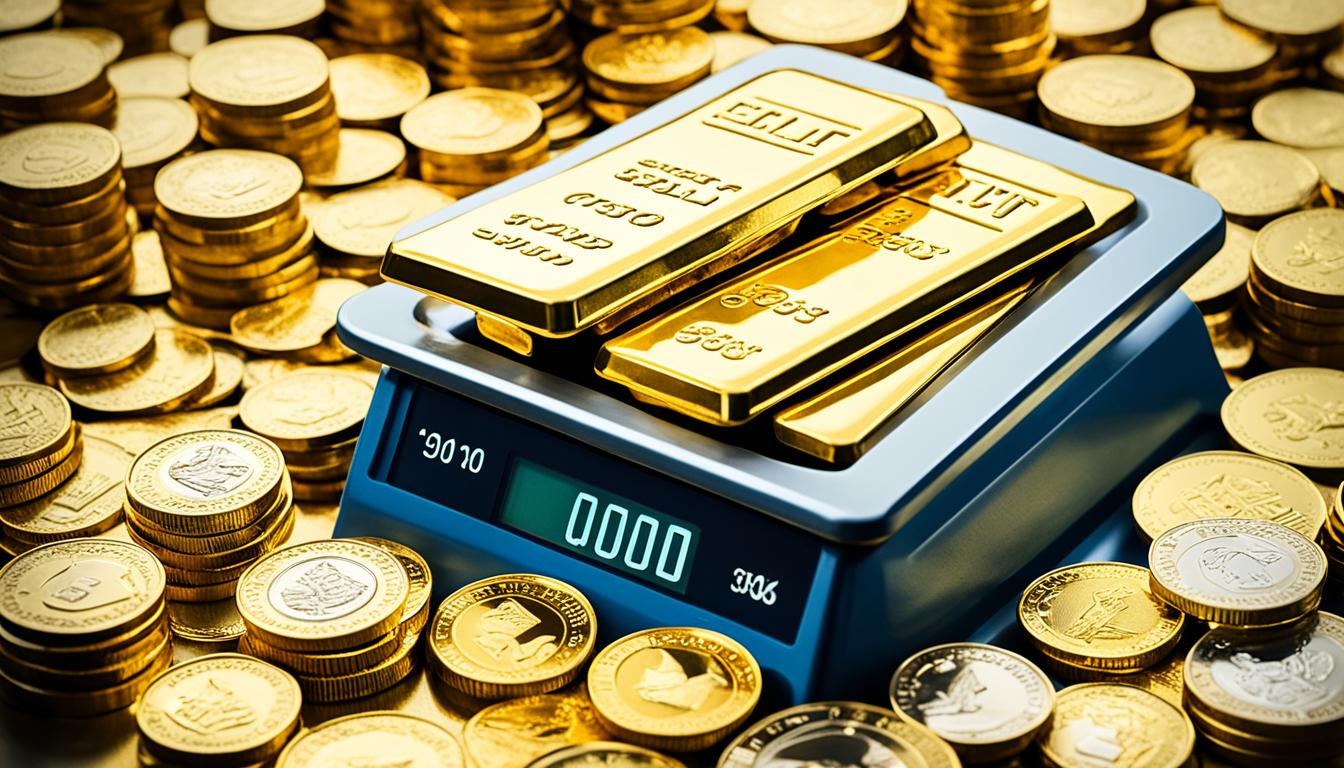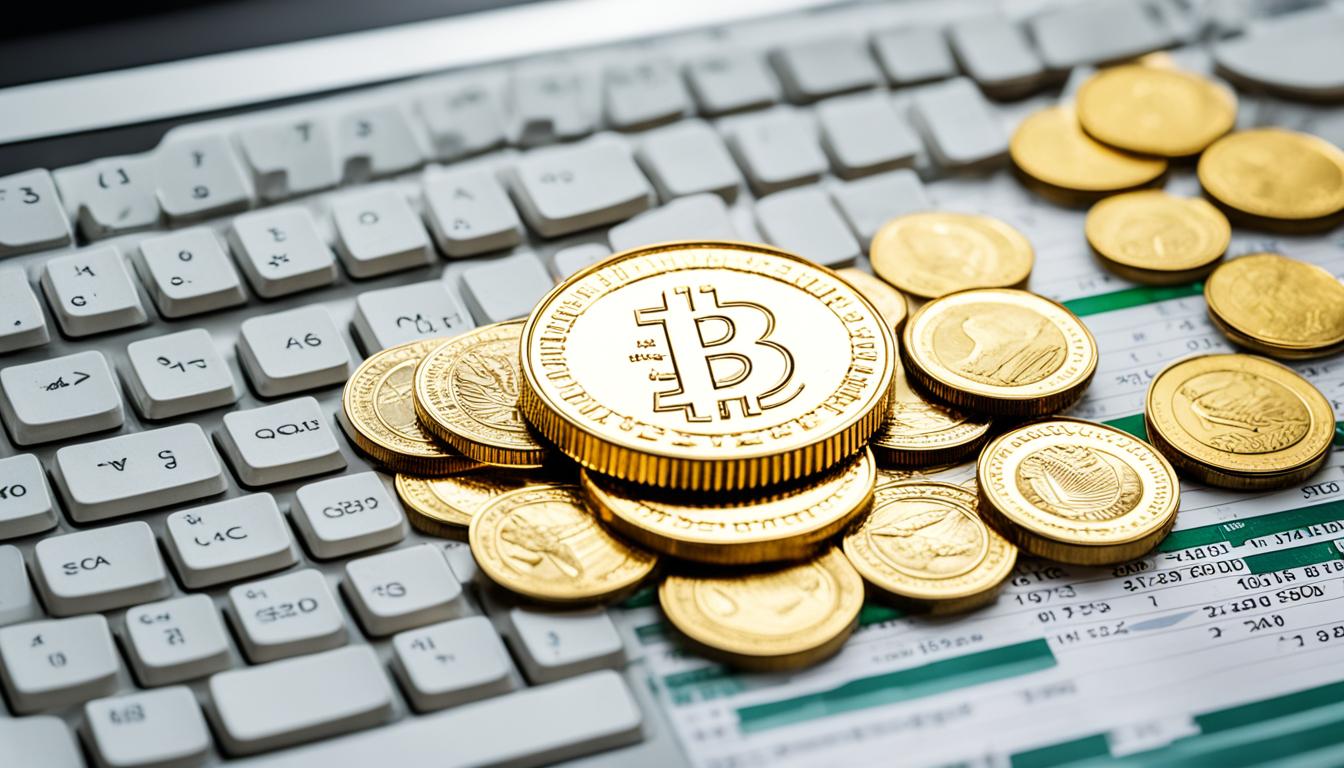Recent central bank gold buying indicates a strategic move to diversify reserves and reduce reliance on the U.S. dollar. This trend suggests gold’s increasing role as a safe haven asset, which can help protect your IRA from economic uncertainties and currency fluctuations. As governments prioritize gold accumulation, its value may grow, offering long-term stability. Staying informed about these global shifts can help you make smarter retirement decisions—if you explore further, you’ll discover how to use this trend to your advantage.
Key Takeaways
- Central bank gold purchases signal increased gold demand, potentially boosting gold prices and the value of gold-backed IRAs.
- Growing gold reserves worldwide highlight gold’s role as a safe-haven asset, enhancing your IRA’s diversification and stability.
- As countries diversify away from the U.S. dollar, gold’s importance in reserves may positively influence its long-term investment outlook.
- Rising global gold accumulation suggests potential for appreciation, making gold IRAs a strategic hedge against economic uncertainties.
- Staying informed about central bank trends helps guide your IRA allocations toward resilient, globally recognized assets like gold.

Have central banks shifted their reserve strategies toward gold in 2025? The answer is a definitive yes. This year, central banks worldwide bought over 1,000 tonnes of gold, marking a record high and surpassing previous years’ totals. In the first quarter alone, they purchased 244 tonnes, the strongest quarterly figure ever recorded. This ongoing trend of rapid accumulation over the past four years signals a strategic shift in reserve holdings. Currently, central banks hold about 36,200 tonnes of gold, making up roughly 20% of their official reserves — the highest level since the 1960s. Experts forecast that official sector purchases will reach nearly 900 tonnes in 2025, slightly below 2024’s 1,045 tonnes but still remarkably high.
This surge in gold buying can be attributed to several key drivers. Central banks are actively de-dollarizing, aiming to diversify their reserves away from the U.S. dollar. Concerns over U.S. fiscal policies and debt sustainability make gold a more attractive hedge. Geopolitical tensions and economic uncertainties also boost demand for gold’s safe-haven appeal. Emerging markets, in particular, leverage gold to protect against domestic currency instability and inflation risks. They see gold not just as a safe store of value but as a strategic asset to balance their reserve portfolios. As a result, many central banks now prefer gold over other assets for diversification, reducing reliance on the dollar and increasing their gold holdings.
Geographically, the trend is widespread. Countries like Poland added nearly 50 tonnes in Q1 2025, reaching a total of 497 tonnes, exceeding their reserve target of 20% of foreign exchange holdings. China’s People’s Bank increased its holdings by over 30 tonnes in June, maintaining a steady purchase streak that totals 2,285 tonnes. Turkey, India, Qatar, and other nations across Asia, the Middle East, and parts of Europe are actively buying gold, reflecting a global shift toward reserve diversification. Central banks are not just accumulating gold but actively managing their holdings, with 44% now handling gold separately compared to 37% last year. This increasing diversification is also driven by the desire to reduce reliance on the U.S. dollar and mitigate geopolitical risks. Additionally, many nations recognize the importance of reserve diversification as a way to strengthen their financial stability and reduce vulnerability to global economic shocks.
Most central banks expect their gold reserves to grow in the coming months. Surveys show 73 central banks are engaged in gold reserve management, and about 95% anticipate increasing holdings within a year. Over 70% foresee gold constituting a notably larger part of their reserves within five years. This evolving landscape indicates that gold is becoming a cornerstone of reserve portfolios, especially as nations aim to reduce dollar exposure. For individual investors, including those with IRAs, this trend underscores gold’s ongoing importance as a hedge against geopolitical risks, currency fluctuations, and economic uncertainties. Recognizing this shift can help you better understand gold’s role in safeguarding your retirement savings amid a changing global financial environment.
Frequently Asked Questions
How Does Central Bank Gold Buying Impact Global Gold Prices?
Central bank gold buying directly impacts global gold prices by increasing demand and creating upward pressure. When banks purchase large quantities, it signals confidence and can drive prices higher, especially amid geopolitical tensions and economic uncertainties. Your investments benefit as rising prices can boost the value of your gold holdings. This sustained buying trend indicates a strong, long-term demand that supports gold’s role as a safe-haven asset, potentially increasing your returns.
Can Individual IRAS Directly Invest in Central Bank Gold Reserves?
You might think your IRA could directly grab a piece of the central bank’s gold pie, but it’s like trying to catch a cloud—impossible. Individual IRAs can’t invest directly in central bank gold reserves. Instead, you buy approved gold products like American Gold Eagles or Canadian Maple Leafs through a custodian. This keeps your investment within the rules while still letting you benefit from gold’s stability and growth potential.
What Are the Risks of Gold Investments Influenced by Central Bank Activities?
You should know that central bank activities can pose risks to your gold investments. When central banks buy or sell large amounts of gold, it can cause sharp price swings and increased volatility. Their policies might also restrict supply or change regulations, making it harder or more expensive for you to buy or sell gold. Economic uncertainties and geopolitical tensions linked to their actions can further impact your investment’s stability and long-term value.
How Often Do Central Banks Buy or Sell Gold in the Market?
Like clockwork, central banks buy gold regularly, often quarterly or monthly, with some adding small amounts consistently. They rarely sell, and when they do, it’s usually tactical and modest. In recent years, their purchasing has surged, with some adding over 1,000 tonnes annually. This steady buying pattern supports gold prices and indicates ongoing confidence in gold as a reserve asset, making it a reliable component for your investment strategy.
Are There Tax Implications for IRAS Holding Gold From Central Bank Purchases?
You might wonder if holding gold from central bank purchases impacts your IRA taxes. Rest assured, the IRS treats gold in IRAs based on its classification, not its origin. As long as your gold meets purity standards and is approved, your tax obligations stay the same. When you withdraw, gains are taxed as ordinary income in a Traditional IRA, or tax-free if you have a Roth, regardless of where the gold was purchased.
Conclusion
As central banks buy gold, it signals confidence in the currency’s stability, yet it also hints at underlying economic uncertainties. While your IRA might grow with gold’s stability, these moves remind you that even global institutions seek refuge in precious metals amid volatility. In this complex dance of confidence and caution, your decision to include gold in your IRA becomes more than just a financial choice—it’s a safeguard in uncertain times.










